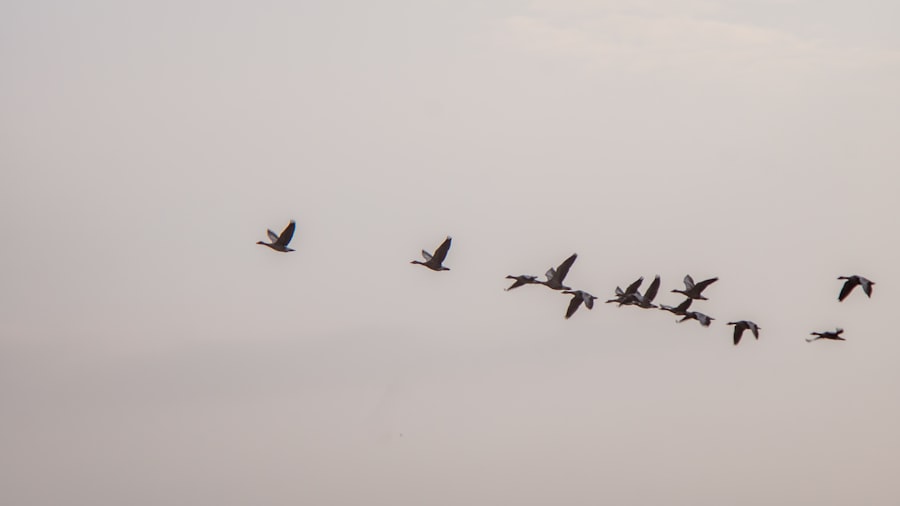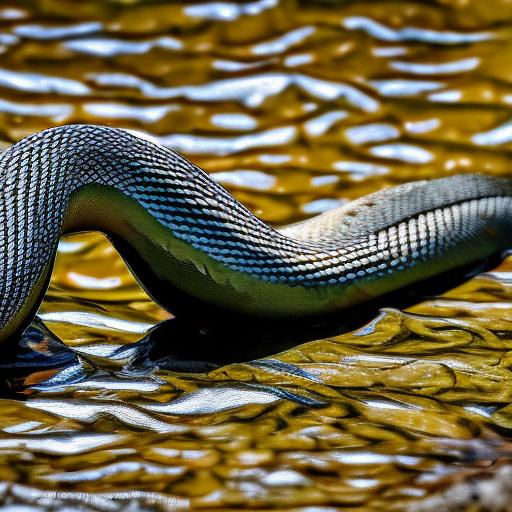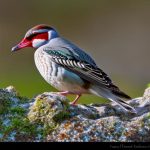Geese are beautiful and majestic creatures that are often found near bodies of water, such as lakes, ponds, and rivers. While they are a sight to behold, they can also become a nuisance when they infest an area. Geese are known for their aggressive behavior, especially during mating season and when they are protecting their young. They can become territorial and may attack humans or other animals that they perceive as a threat. Additionally, geese can leave behind large amounts of droppings, which can create unsanitary conditions and damage the landscape.
Geese infestations can be particularly problematic in urban and suburban areas where there are bodies of water and open spaces. Parks, golf courses, and residential areas near lakes or ponds are often targets for geese infestations. The presence of geese can disrupt recreational activities, damage property, and pose health risks due to their droppings. As a result, property owners and managers are constantly seeking effective methods to deter geese and prevent infestations.
Key Takeaways
- Geese infestation can be a problem for many property owners, causing damage and creating unsanitary conditions.
- Rubber snakes are commonly used as a deterrent for geese, as they mimic natural predators and can scare the geese away.
- The effectiveness of rubber snakes in keeping geese away varies, with some finding success and others seeing little to no impact.
- Other methods for geese deterrence include using decoys, sound devices, and physical barriers to prevent geese from entering an area.
- Tips for using rubber snakes to keep geese away include moving them regularly, placing them in areas where geese are likely to gather, and using them in combination with other deterrent methods.
The Use of Rubber Snakes as a Deterrent for Geese
One method that has gained popularity in recent years for deterring geese is the use of rubber snakes. The idea behind using rubber snakes is to take advantage of geese’s natural fear of predators. By placing rubber snakes in areas where geese are known to congregate, property owners hope to create the illusion that there is a predator present, which will discourage the geese from staying in the area.
Rubber snakes are a cost-effective and non-invasive method of geese deterrence. They are easy to obtain and can be placed strategically around a property to create a visual deterrent for geese. Additionally, rubber snakes do not pose any harm to the geese or the environment, making them a humane option for deterring geese infestations.
Effectiveness of Rubber Snakes in Keeping Geese Away
The effectiveness of rubber snakes in keeping geese away has been a topic of debate among property owners and wildlife experts. Some claim that rubber snakes are an effective deterrent for geese, while others argue that geese quickly become accustomed to the presence of rubber snakes and no longer perceive them as a threat.
Proponents of using rubber snakes argue that they have seen a decrease in geese activity after placing rubber snakes in the area. They claim that the visual presence of the rubber snakes creates a sense of danger for the geese, causing them to seek out safer locations. Additionally, some property owners have reported that the presence of rubber snakes has deterred geese from nesting in certain areas, which has helped prevent future infestations.
On the other hand, skeptics argue that geese are intelligent animals that quickly learn to recognize the rubber snakes as harmless objects. They claim that geese may initially be startled by the presence of rubber snakes, but they will eventually become desensitized to them and continue to inhabit the area as before. Additionally, some experts argue that the effectiveness of rubber snakes may vary depending on the specific behavior and habits of the geese in a particular area.
Other Methods for Geese Deterrence
While rubber snakes have been used as a method for deterring geese infestations, there are several other methods that property owners can consider to keep geese away. One common method is the use of visual deterrents, such as reflective tape or balloons, which can create a sense of danger for geese and discourage them from staying in an area. Another option is the use of sound deterrents, such as propane cannons or sonic devices, which emit loud noises to scare away geese.
Physical barriers, such as fences or netting, can also be effective in preventing geese from accessing certain areas. Additionally, landscaping modifications, such as planting tall grasses or shrubs, can create an inhospitable environment for geese and discourage them from nesting in an area. Finally, some property owners may choose to use chemical deterrents, such as goose repellent sprays, to discourage geese from staying in an area.
Tips for Using Rubber Snakes to Keep Geese Away
For property owners who are considering using rubber snakes as a method for deterring geese infestations, there are several tips to keep in mind to maximize their effectiveness. First, it is important to strategically place the rubber snakes in areas where geese are known to congregate, such as near bodies of water or open spaces. Placing the rubber snakes in visible locations will help create a visual deterrent for the geese.
Additionally, property owners should regularly move the rubber snakes to different locations to prevent geese from becoming accustomed to their presence. By changing the placement of the rubber snakes periodically, property owners can maintain the illusion of a predator presence and continue to deter geese from staying in the area.
Finally, property owners should consider using other methods in conjunction with rubber snakes to maximize their effectiveness. Combining visual deterrents with sound deterrents or physical barriers can create a multi-faceted approach to deterring geese infestations and preventing them from returning.
Potential Drawbacks of Using Rubber Snakes as a Geese Deterrent

While rubber snakes may be a cost-effective and non-invasive method for deterring geese infestations, there are potential drawbacks that property owners should consider before using them. One potential drawback is that rubber snakes may not be effective in all situations or with all populations of geese. As mentioned earlier, some experts argue that geese may quickly become desensitized to the presence of rubber snakes and continue to inhabit an area as before.
Additionally, property owners should be aware that using rubber snakes as a method for deterring geese infestations may require ongoing maintenance and monitoring. Regularly moving the rubber snakes to different locations and ensuring that they remain visible can be time-consuming and may not always guarantee success in deterring geese.
Finally, property owners should consider the potential impact of using rubber snakes on other wildlife in the area. While rubber snakes are non-invasive and do not pose any harm to geese, they may inadvertently affect other species that inhabit the same area. Property owners should carefully consider the potential consequences of using rubber snakes before implementing them as a method for deterring geese infestations.
Conclusion and Final Thoughts on Using Rubber Snakes to Keep Geese Away
In conclusion, geese infestations can pose significant challenges for property owners and managers, particularly in urban and suburban areas near bodies of water. While there are several methods available for deterring geese infestations, using rubber snakes has gained popularity as a cost-effective and non-invasive option.
The effectiveness of rubber snakes in keeping geese away has been a topic of debate among property owners and wildlife experts. While some claim that rubber snakes have been successful in deterring geese infestations, others argue that geese may quickly become desensitized to their presence.
Ultimately, property owners should carefully consider the potential benefits and drawbacks of using rubber snakes as a method for deterring geese infestations before implementing them. By taking into account the specific behavior and habits of the geese in their area, property owners can make informed decisions about whether using rubber snakes is an appropriate option for keeping geese away.
If you’re looking for effective ways to keep geese away from your property, you might also be interested in learning more about breeding geese. Understanding the incubation period for goose eggs can provide valuable insights into their behavior and lifecycle. Check out this informative article on PoultryWizard to gain a deeper understanding of geese and how to manage them effectively.
FAQs
What are rubber snakes?
Rubber snakes are realistic-looking replicas of real snakes made from rubber or plastic materials. They are often used as a non-toxic and humane method of deterring pests and animals.
Do rubber snakes keep geese away?
Rubber snakes can be used as a deterrent to keep geese away from certain areas. The realistic appearance of the rubber snakes may cause the geese to perceive the area as unsafe and choose to avoid it.
How should rubber snakes be used to keep geese away?
Rubber snakes should be strategically placed in areas where geese are causing problems, such as near ponds, gardens, or walkways. It is important to move the rubber snakes regularly to prevent the geese from becoming accustomed to their presence.
Are rubber snakes a humane method of geese control?
Yes, using rubber snakes as a deterrent for geese is considered a humane method of pest control. It does not harm the geese and simply encourages them to find a different location.
Are there any drawbacks to using rubber snakes to keep geese away?
While rubber snakes can be effective in deterring geese, they may not work in all situations. Some geese may become accustomed to the presence of the rubber snakes over time, reducing their effectiveness. Additionally, other methods of geese control may be necessary in conjunction with the use of rubber snakes.
Meet Walter, the feathered-friend fanatic of Florida! Nestled in the sunshine state, Walter struts through life with his feathered companions, clucking his way to happiness. With a coop that’s fancier than a five-star hotel, he’s the Don Juan of the chicken world. When he’s not teaching his hens to do the cha-cha, you’ll find him in a heated debate with his prized rooster, Sir Clucks-a-Lot. Walter’s poultry passion is no yolk; he’s the sunny-side-up guy you never knew you needed in your flock of friends!







